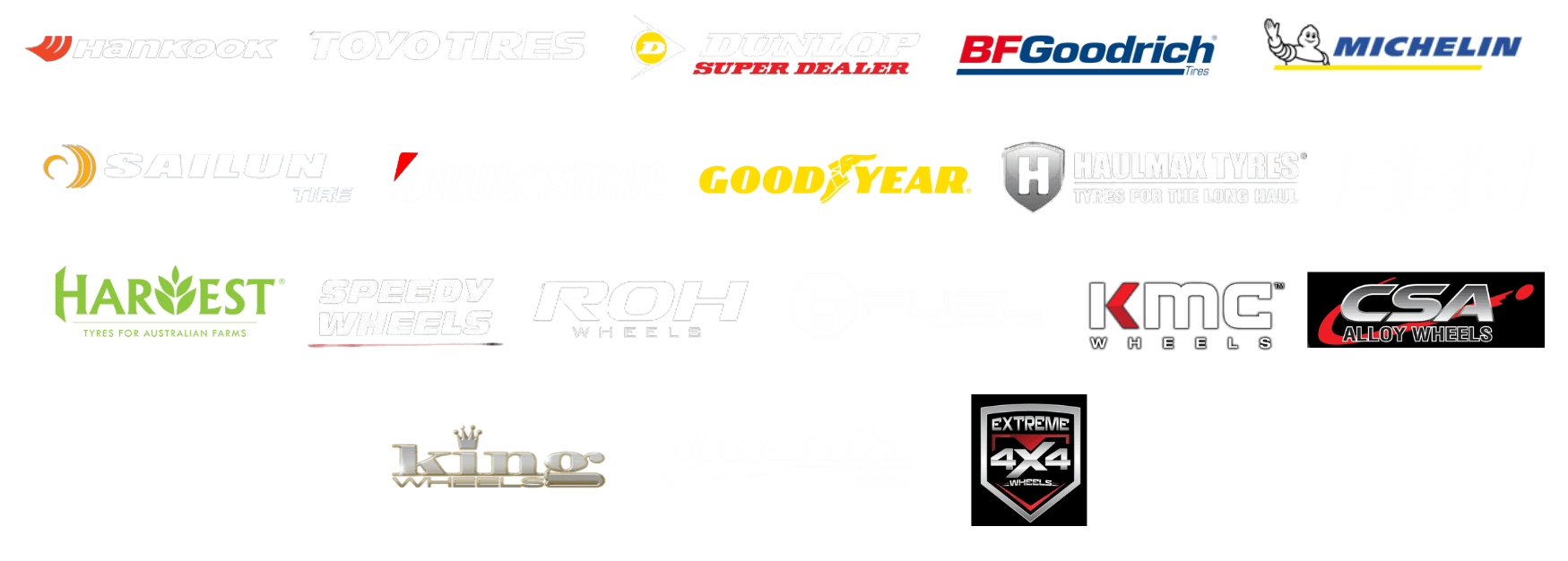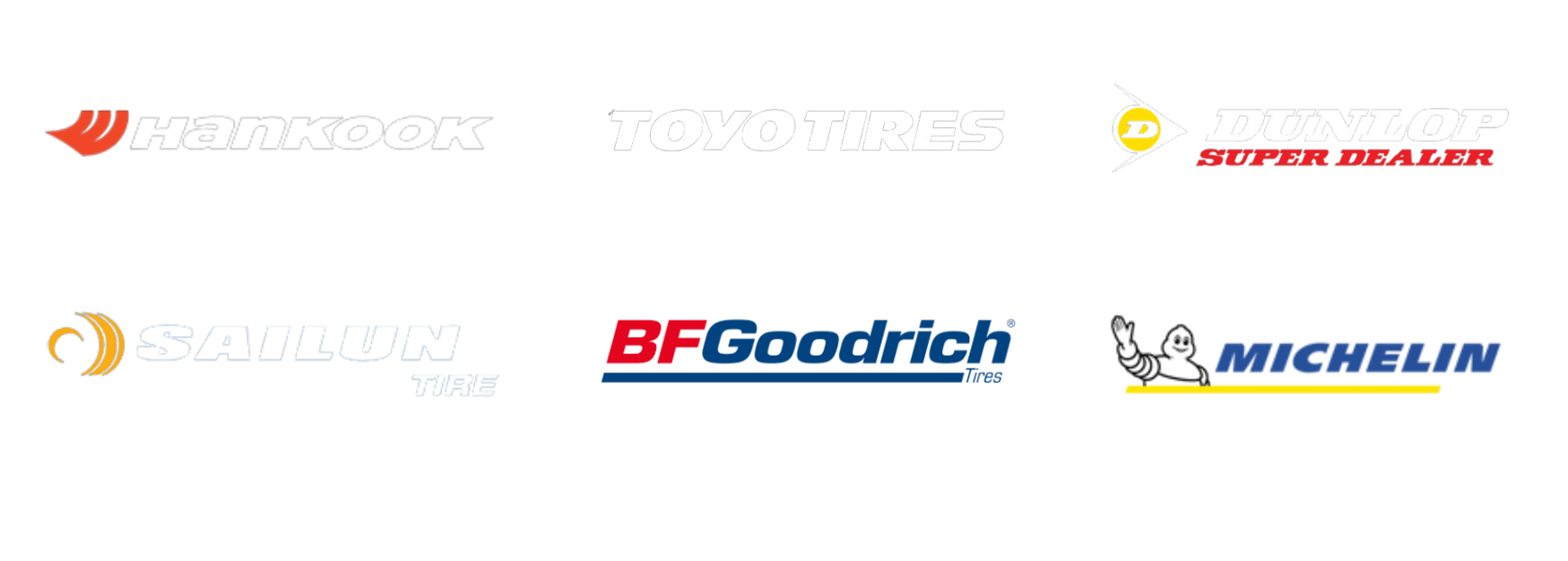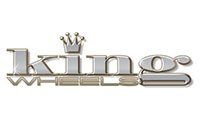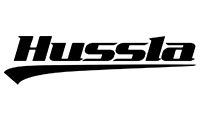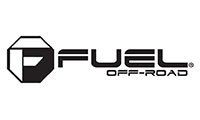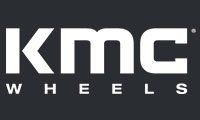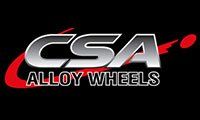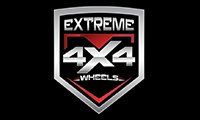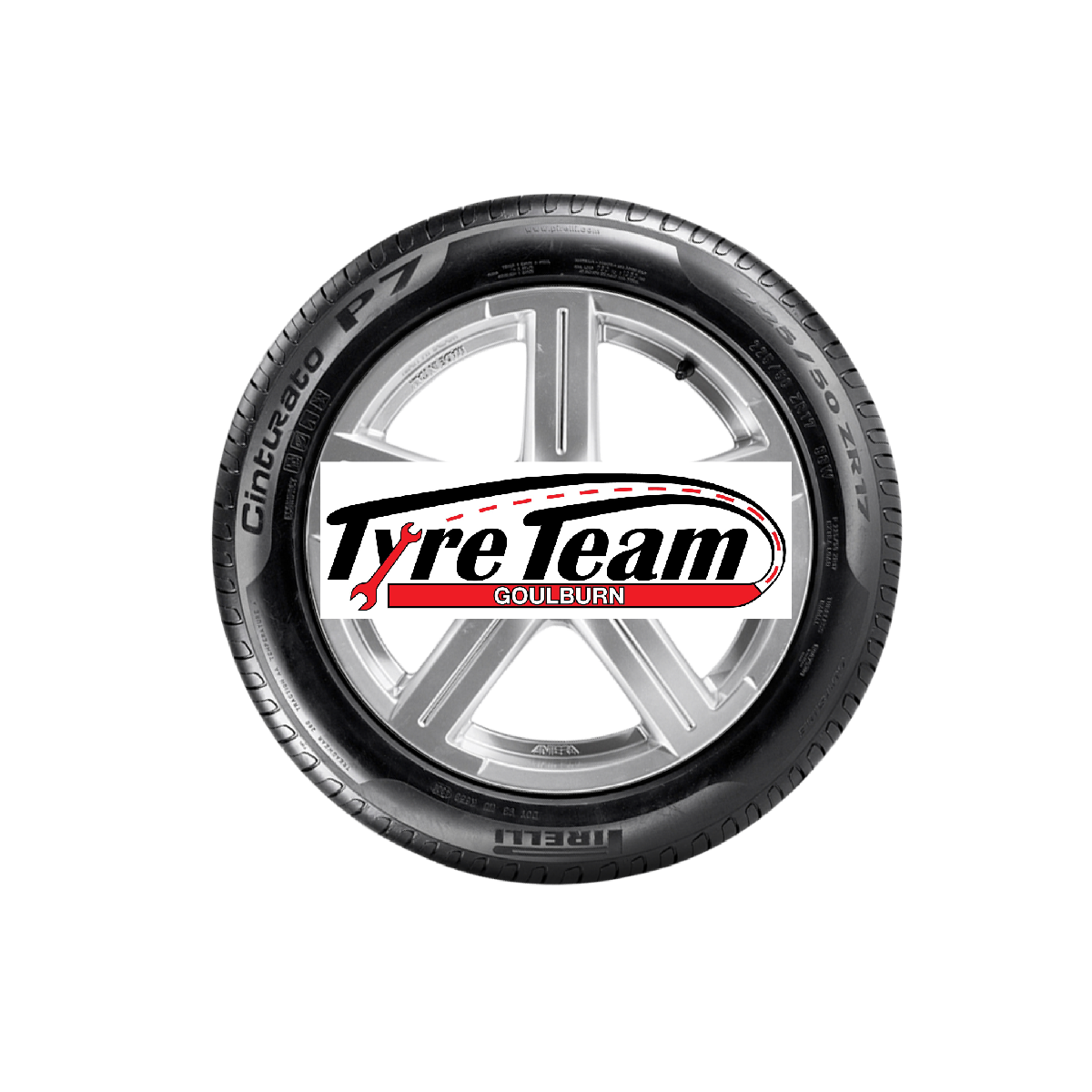We Stock All Major Tyre Brands
TYRE TEAM GOULBURN
EXPERIENCE THE GOULBURN TYRE TEAM DIFFERENCE
Tyre Team Goulburn specialise in Tyres for Cars and Trucks, Car Servicing, Batteries, Wheel Alignments, Suspension, Brakes and All types of Mechanical Services
We are committed to providing you with the best customer service and your on-road safety.
WHEEL BRANDS WE SELL
Car & 4WD Wheel Alignment

Wheel alignment is important to the health of your car or truck. If you hit a massive pothole, you might bump your suspension out of the carefully calculated locations that the components have been set. All of the elements that make your car go straight are called "alignment." Some shops try to make it seem like rocket science, but wheel alignment is a fairly straightforward affair. The inclusive term "wheel alignment" involves three main measurements -- caster, camber, and toe. These measurements have standards that a technician uses as targets of adjustment. In other words, get as close as you can to the right measurement.
Feel free to ask us anytime about our Car and 4WD wheel alignment process. We want you to feel comfortable with us, and are more than happy to explain our process in detail.
GET MORE LIFE OUT OF YOUR TYRES
Tyre Facts and Information presented by Goulburn Tyre Team

HOW TO MAXIMISE THE LIFE OF YOUR TYRES AND STAY SAFER ON THE ROAD
Ensure your tyres have more than 1.6mm of tread. Ensure your tyres are correctly inflated.
Most new tyres start out with about 8-9mm of tread. When the tread wears, the tyre’s ability to disperse water reduces. Regularly check the indicators on your tyre’s tread pattern, which will show as lines across the tread when it’s reduced to 1.6mm.
We are committed to Customer Service And your on road safety.
Tread Depth. Under or over-inflation is dangerous and can lead to excessive tread wear. Look for the manufacturer’s recommended tyre pressure, listed on the sticker usually located on the driver’s side door pillar or fuel flap, or have a tyre specialist inflate it for you.
Check your tyres weekly, either yourself or use a tyre specialist from Tyre Team Goulburn.
Check your tyre pressure using an accurate tyre gauge and when your tyres are cold. For heavy loads or sustained high-speed operations, increase the inflation pressures according to your vehicle’s recommendations.
Check the age of your tyres.
There is no set rule for at what the age tyres should be replaced. However, some car makers advise against using tyres over six years old. Over time heat, sunlight and ozone can affect the tyre compound. To check the age of your tyres, look at the Tyre Identification Number (TIN). The last four digits indicate the week and year the tyre was made, for example a tyre with TIN XXX4804 was manufactured in the 48th week of 2004. If in doubt, check with a tyre specialist at Tyre Team in Goulburn.
TREAD DEPTH INDICATORS

WIDTH
195 indicates the section width of a tyre in millimetres.
ASPECT RATIO
65 is a tyre’s aspect ratio which is its height from the base of the tread to the rim. This number represents a percentage of the tread width. For example, the height of this tyre is 65% of its width. Low profile tyres have smaller aspect ratio percentages.
TYRE CONSTRUCTION
R means that the tyre has radial ply construction, meaning the way in which it has been constructed. Most passenger tyres are constructed this way so you will rarely find a car tyre without an R.
RIM
15 indicates the diameter of the wheel rim. So if you are buying wheels for existing tyres, this is the size in inches you will require.
LOAD & SPEED
91 V is a symbol that indicates the maximum load capacity and speed at which a tyre can be safely operated, subject to the tyre being in sound condition, correctly fitted and with the recommended inflation pressure.
OD
Overall Diameter of the unloaded tyre in mm
GET A PROFESSIONAL WHEEL ALIGNMENT DONE REGULARLY FROM THE MECHANICS AT TYRE TEAM IN GOULBURN
Have a professional wheel alignment every six months or 10,000 km, whichever comes first. Misaligned wheels will cause your tyres to wear excessively and irregularly. Having correctly aligned wheels is also essential for safe handling and braking; it can even help to reduce driver fatigue.
ROTATE YOUR TYRES REGULARLY
For maximum tyre life, you should rotate your tyres every 5,000 – 8,000 km, or according to the vehicle manufacturer’s recommendations. Tyres can wear differently depending on their position on the vehicle due to vehicle loading or suspension and steering set up. Rotating your tyres will give a more even, safer wear pattern and prolong tyre life.
TYRE WEAR
The tread on your tyres is what maintains your driving control, grips the road, disperses water and keeps you safe.
A worn tyre increases the the time it takes you to brake in the wet, as well as your chance of losing control.
UNDERSTANDING TYRE SIZE
Understanding tyre size made easy with these points from the Tyre Team Goulburn Mechanics.
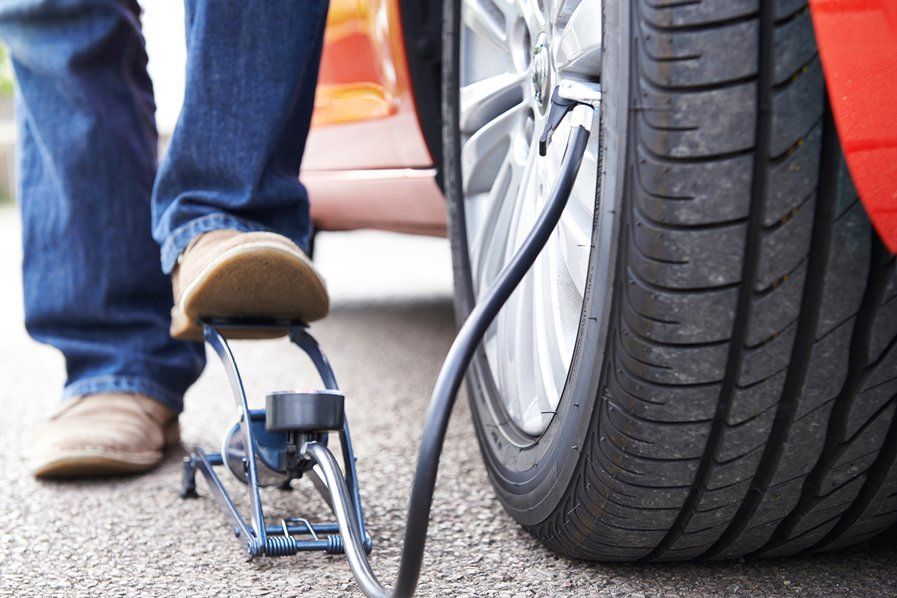
TYPE DEFINITION

TYRE GLOSSARY

All you need to know about tyres and more.

AIR PRESSURE
The pressure of the air inside a tyre. Tyre pressure is measured in psi (see psi).
ASPECT RATIO
Aspect ratio is section height divided by section width and multiplied by 100. The higher the figure, the higher the tyre’s section height, the smoother the ride. The lower the figure, the greater a tyre’s section width and the safer the tyre – best for high speed cars.
BALANCING
Balancing a wheel (or tyre) ensures that the weight is evenly distributed. This prevents vibration and uneven tyre wear.
CAMBER
Camber is the angle that the tyre tilts – 0 degrees means the tyre is perfectly perpendicular to the road. If it tilts in at the top towards the vehicle, the camber is negative. Positive camber is when the tyre tilts away from the vehicle at the top.
CASING
The casing of a tyre is the outside part of a pneumatic tyre (i.e. not the inner tube).
COLD INFLATION PRESSURE
The pressure of a tyre before the vehicle is driven and the tyre is warmed up.
INNERLINER
An innerliner is a lining inside a tyre that prevents air leaking.
LOAD INDEX
The maximum weight a tyre can safely carry.
MARKINGS
Tyre markings are the symbols on a tyre’s sidewall to indicate (for example) load index.
PSI
PSI is ‘pounds per square inch’ and is a standard measurement of pressure. Basically, it’s the amount of force exerted over one square inch. Normal tyre pressure is 32 psi.
RIM
Rim and wheel are often used interchangeably – it is the part that the tyre sits on.
ROLLING RESISTANCE
The force required to maintain forward momentum in a straight line at a constant speed.
RUN FLAT TECHNOLOGY TYRES
Run Flat Technology tyres are designed to withstand punctures, thereby allowing the driver to continue to drive even when the tyre is completely deflated. The safety benefits are that it avoids the need for drivers to stop by the side of the road to change tyres and giving drivers ample time to make it home or to the nearest tyre replacement centre, provided they drive within the accepted speed limit and safe distance.
SIDEWALL
The part of a tyre between the edge of the wheel and tread.
SIPES
Small slots in a tyre’s tread.
SPEED RATING
The maximum speed a tyre can travel, corresponding to its load index.
TYRE
The rubber part that sits on the wheel.
TYRE SIZE
Tyre size is actually a set of numbers and letters that define a tyre’s specifications, such as section width (from sidewall to sidewall), aspect ratio, speed rating and diameter of the wheel the tyre is made to fit on.
TREAD
The raised part of the rubber on a tyre.
TREADWEAR INDICATOR
Features built into a tyre to let the driver know that the tyre is worn sufficiently to necessitate changing.
UNDERINFLATION
When a tyre is not inflated enough – it can result in a shorter lifespan and reduce fuel economy. Steering and cornering will be negatively affected and rolling resistance will be increased.
WINTER TYRES
Winter tyres are specifically designed to be used on winter roads – ice, snow and water.
WE STOCK ALL MAJOR TYRE BRANDS
WHAT OUR CUSTOMERS SAY





